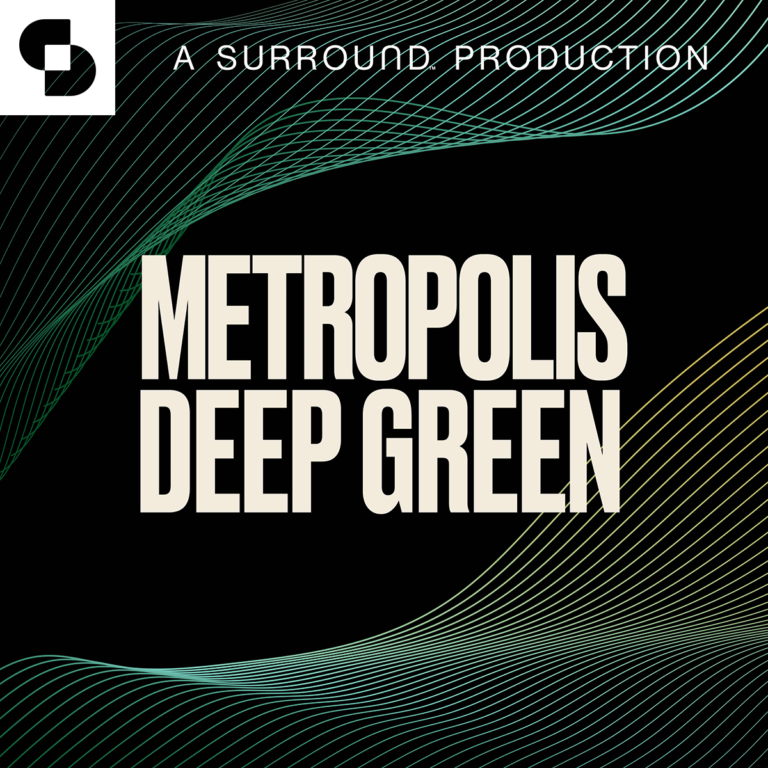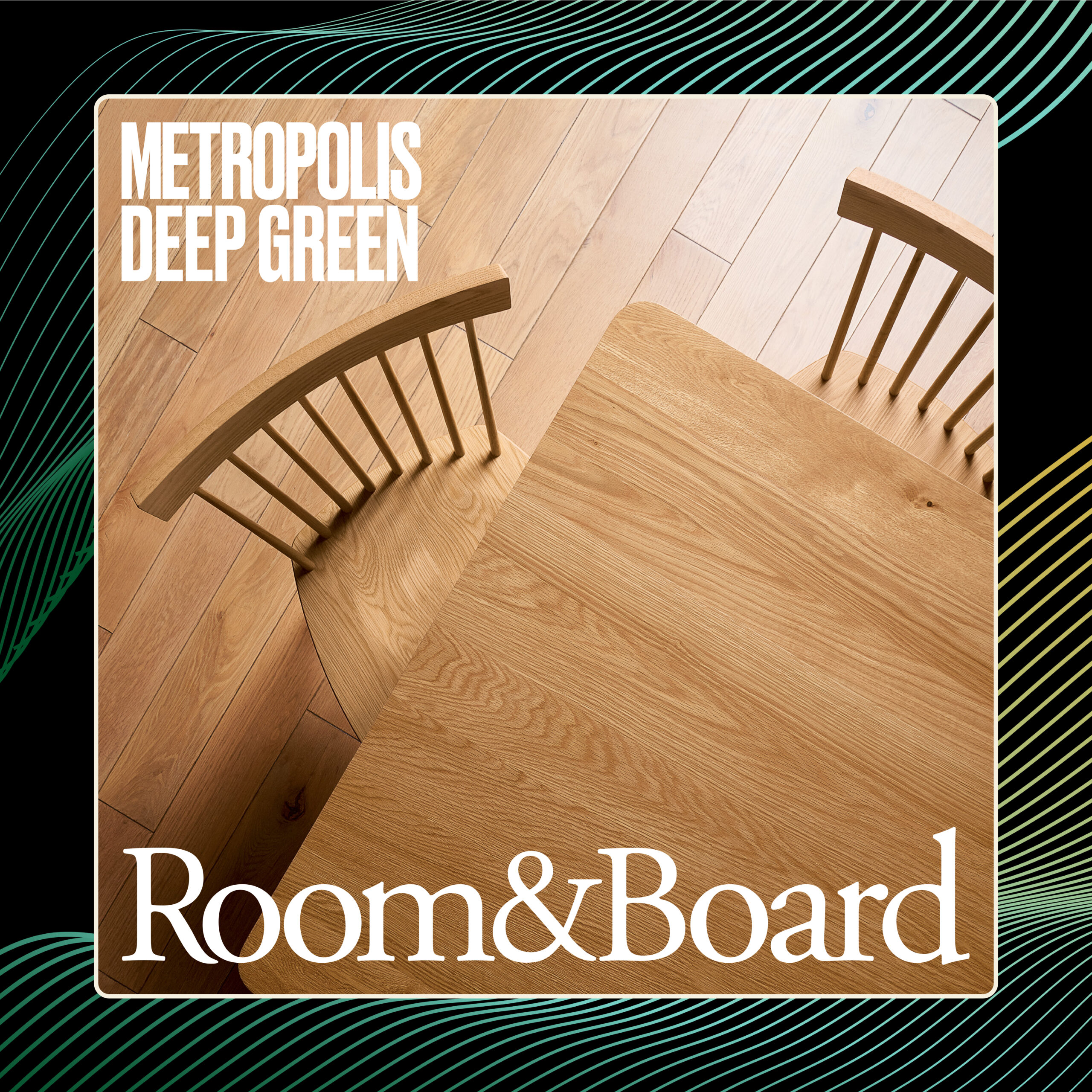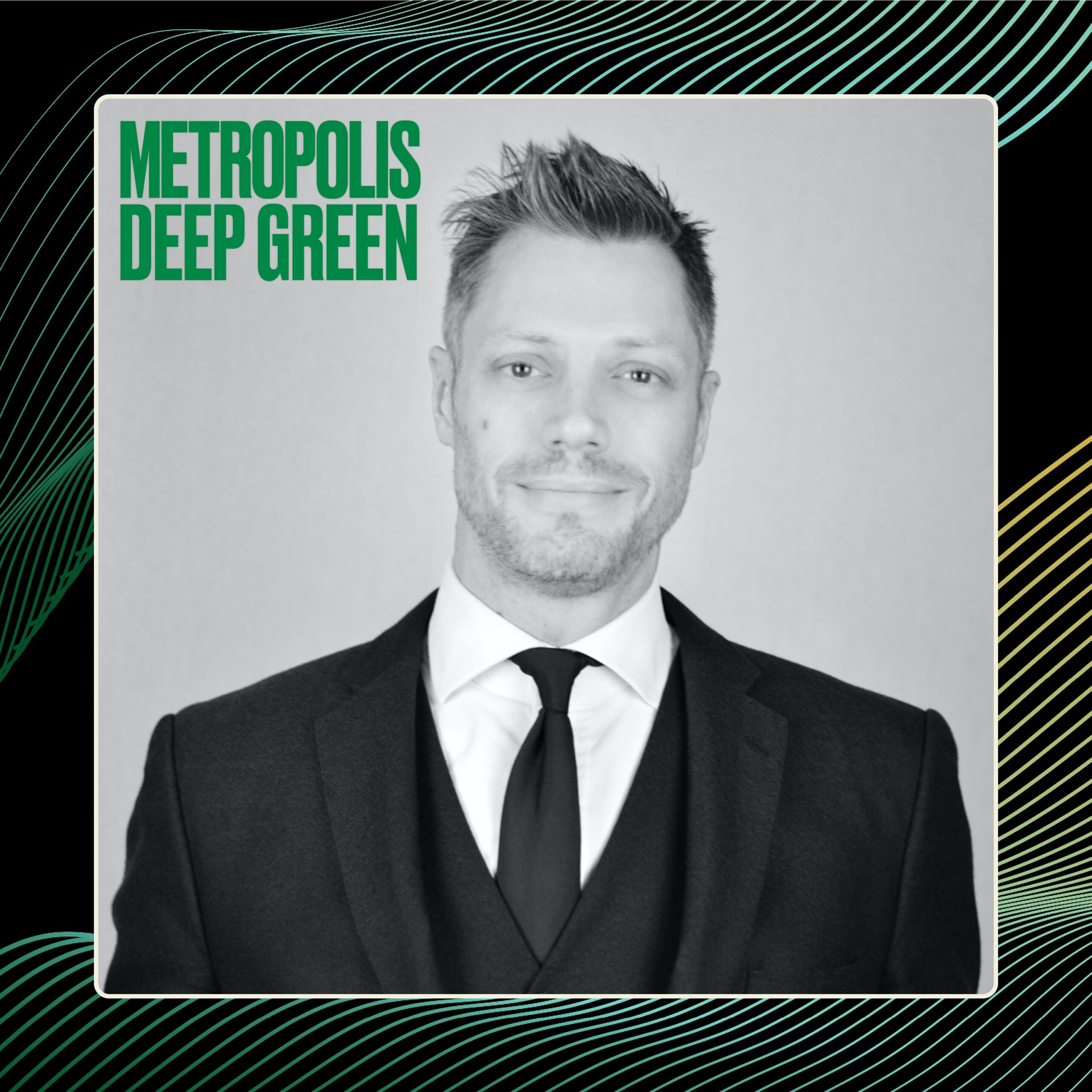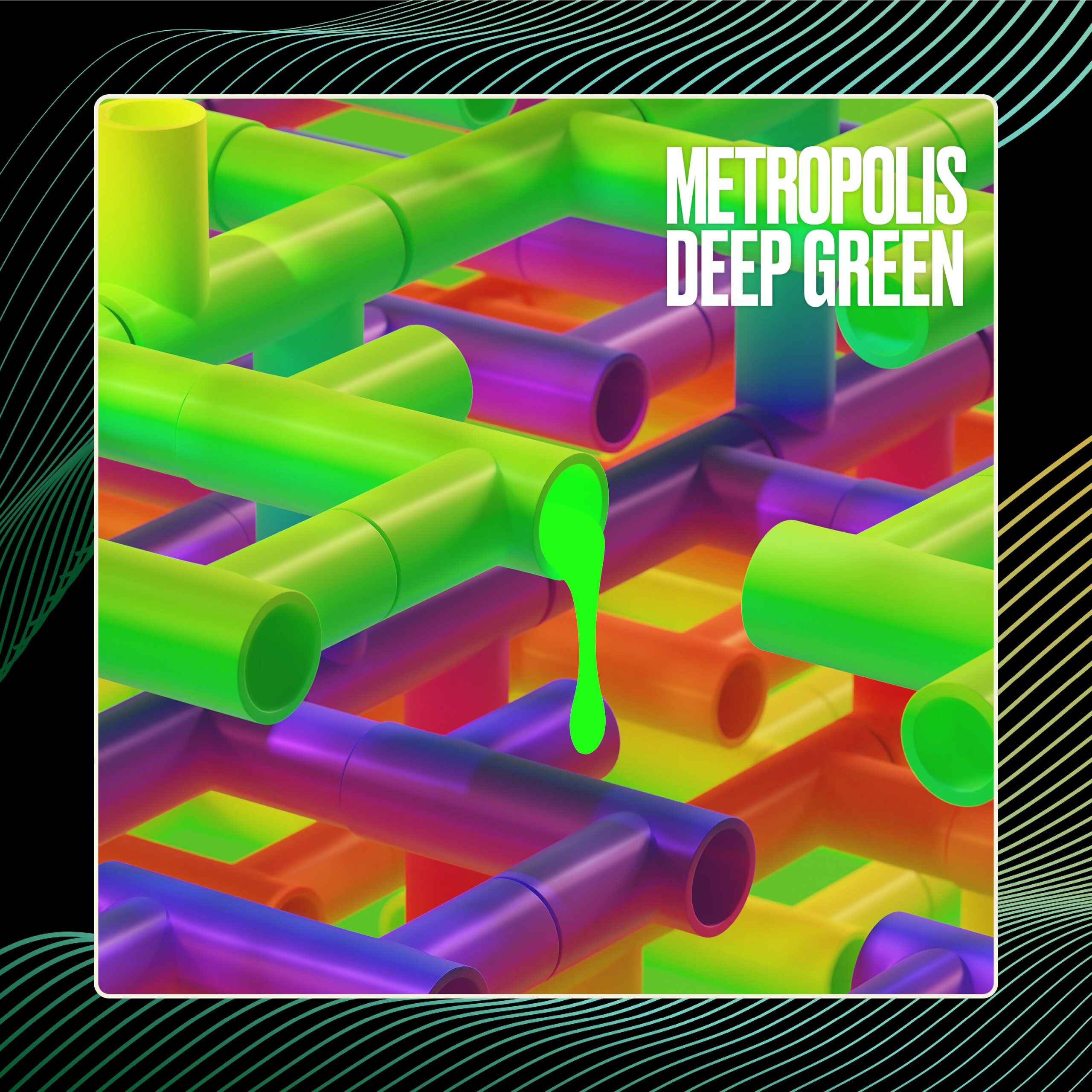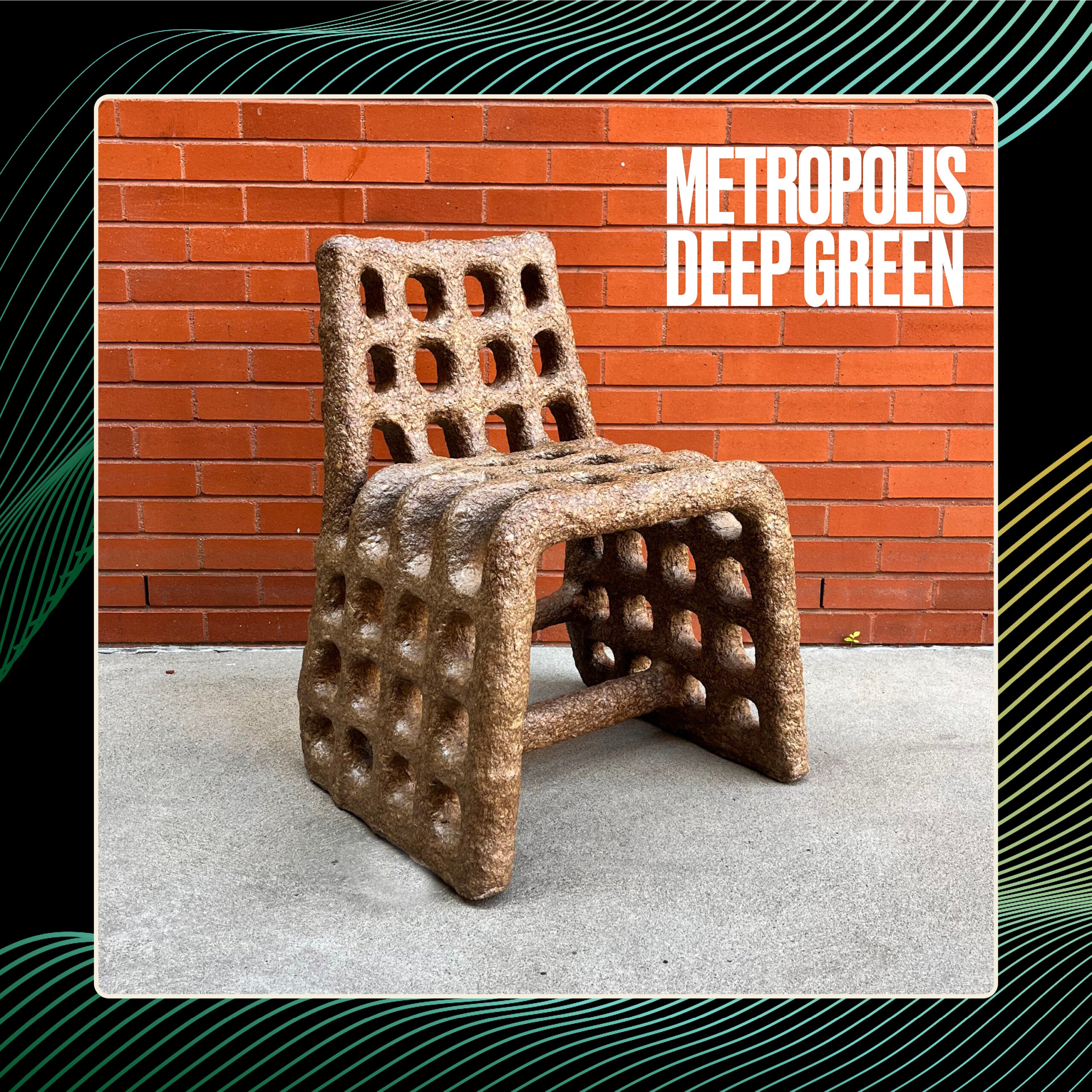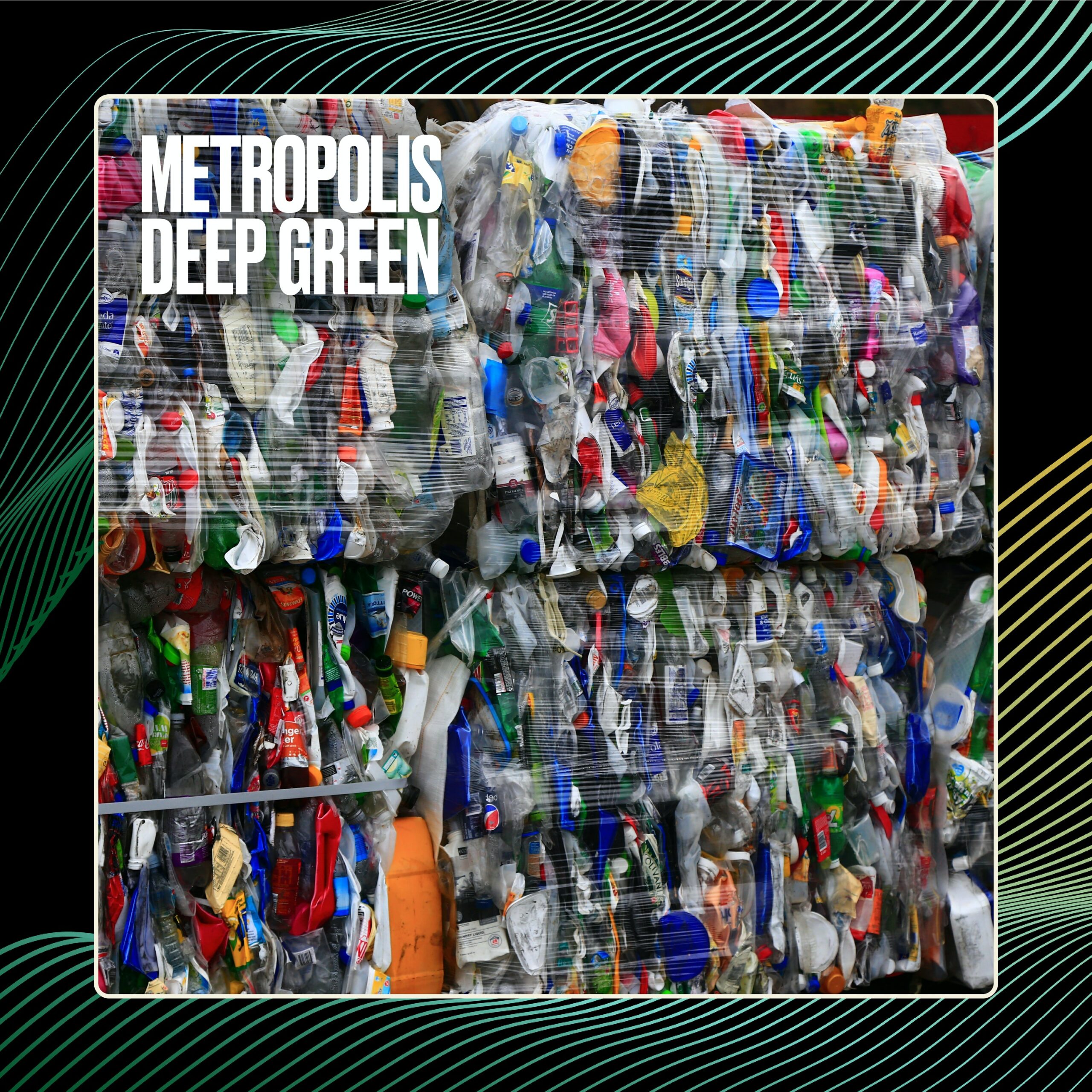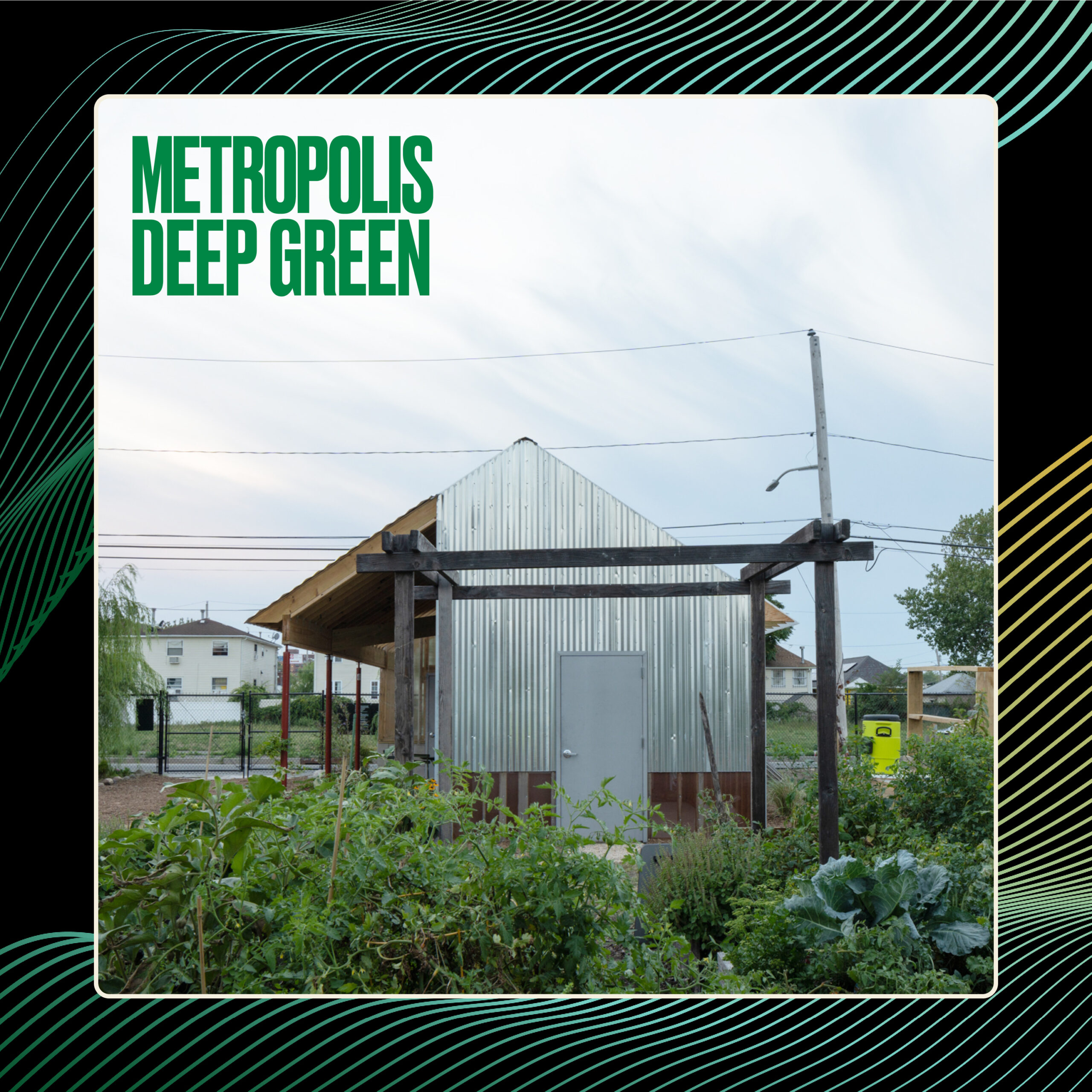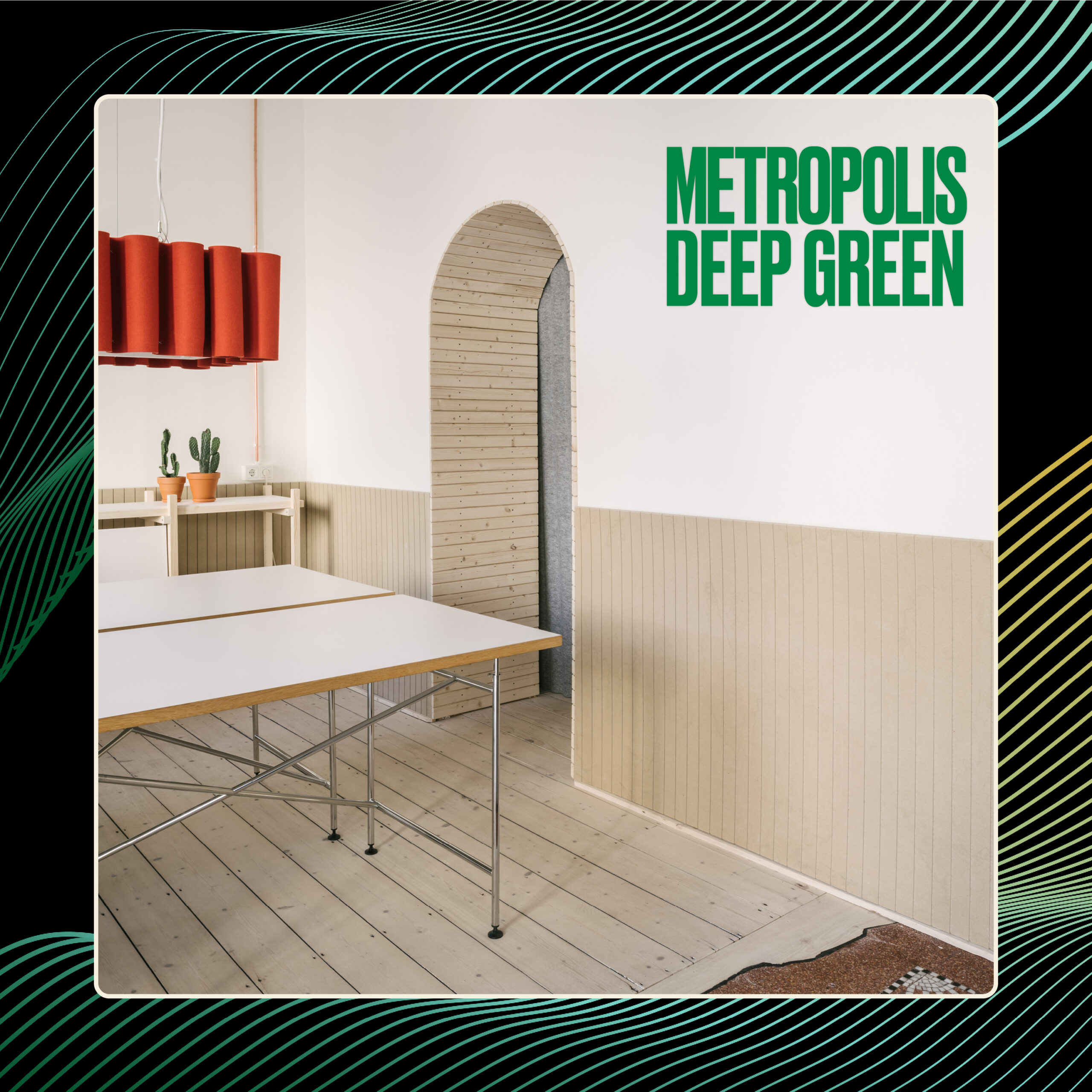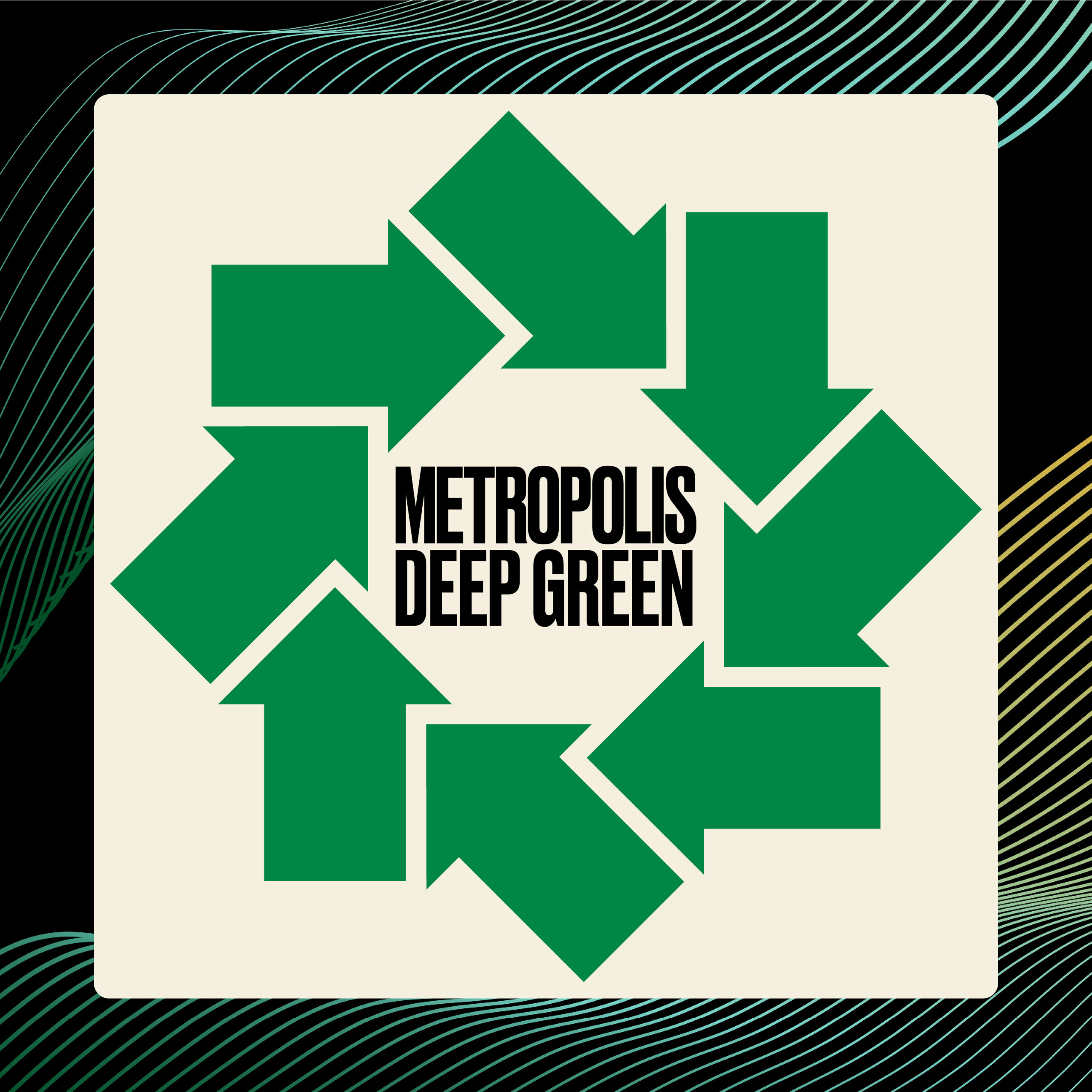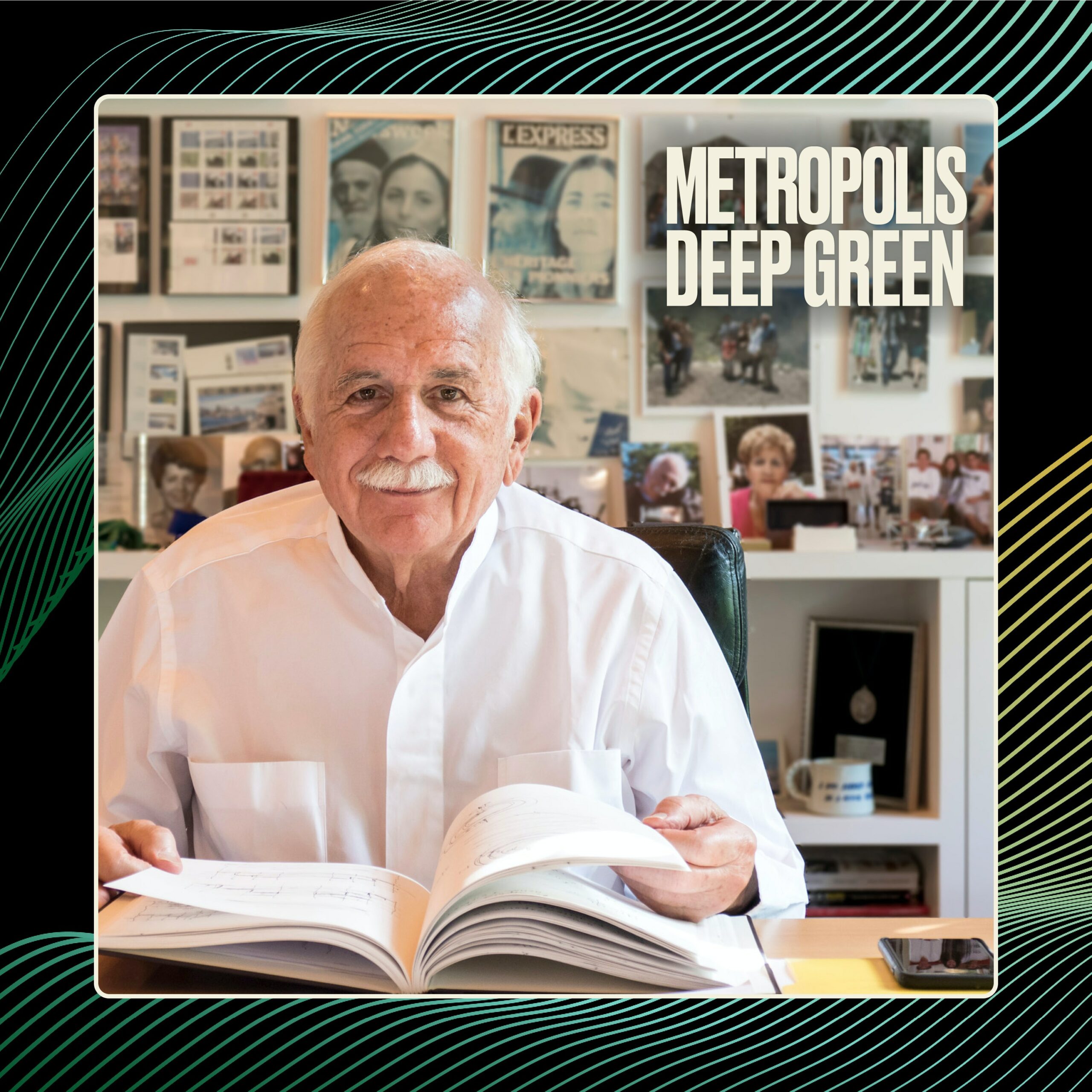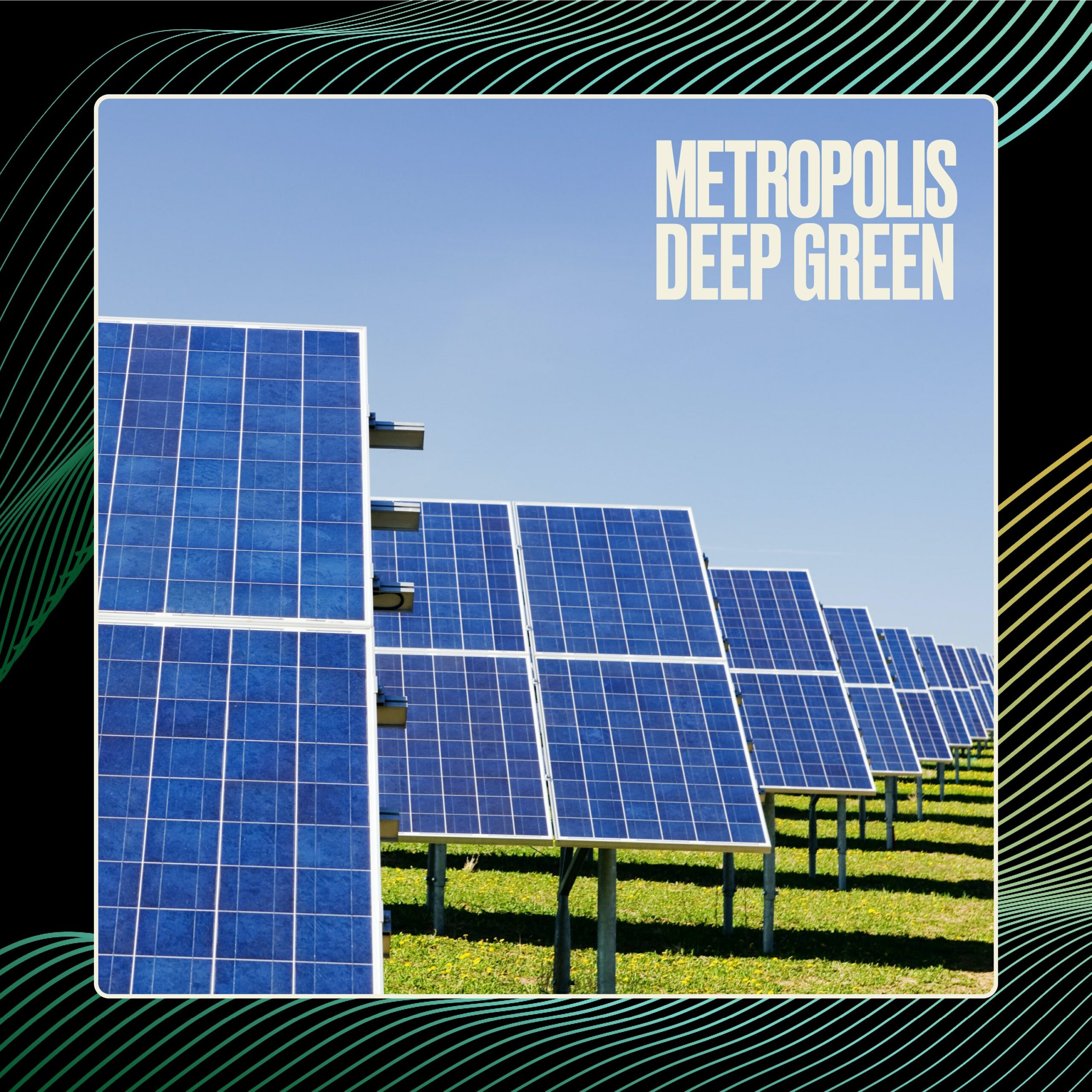Even if you don’t care about technology, it’s likely you’ve heard something about the metaverse. It’s a sort of 3-dimensional, immersive internet that would take lots of technologies that exist already today, like video games, VR, and NFTs, and find a way to connect all of them.
While our team was reporting on this new phenomenon for our January/February 2022 issue, we began to wonder about the carbon footprint of the metaverse. There is no metaverse without the cloud, which actually lives in buildings—steel and concrete buildings called data centers. If more people get in the metaverse, more stuff gets on the cloud, more data centers—you get the picture. There’s got to be a way to start addressing this before the problem gets out of hand.
Can we build an online world that doesn’t destroy the real one? In this episode, reporter Audrey Grey speaks to Drs. Julie Kriegh and Hyun Woo “Chris” Lee, UW College of Built Environments colleagues, who were part of a team imagining a completely different future for data centers.
Resources:
The Design Guide to the Metaverse: https://metropolismag.com/viewpoints/metaverse-design-guide/
Connect with Metropolis:
Instagram: @metropolismag
Facebook: facebook.com/MetropolisMag/
Deep Green is a production of SANDOW Design Group.
[00:00:00] Avi: Welcome to Deep Green, a biweekly show about how the built environment impacts climate change and equity. Deep Green is brought to you by Metropolis. I’m your host Avi Rajagopal. Buildings are some of the biggest things we make as human beings. So if you want to know how we can do better for the environment and for on life on this.
[00:00:30] You have to understand buildings and cities and all the things that go into them. And that’s what we want to help you with here at Deep Green. Even if you don’t care about technology at all, it’s likely you’ve heard something about this new tech paradigm called the metaverse. The basic idea is that it’s a sort of three dimensional, immersive.
[00:00:57] The metaverse would take lots of technologies that already exist today, like video games or virtual reality and find a way to connect all of them. So potentially you could go from joining a virtual work meeting to shopping for shoes in 3d while being able to pay for goods and services throughout online, out online.
[00:01:18] Now we dedicated Metropolis Jan Feb 2022 issue to the metaverse and you can go to our website, metropolismag.com to read our design guide to the metaverse. But while our team was reporting on this new phenomenon, we began to wonder about the carbon footprint of it all. And we had good reason to start thinking about that.
[00:01:46] One of the fundamental ideas of the metaverse is that you will be able to buy and sell object and services in the virtual world using most likely cryptocurrency. Now, whether or not you’re already [00:02:00] invested in cryptocurrency, you might not. That a single transaction of Ethereum, a popular cryptocurrency emits about 110 kilograms of carbon dioxide.
[00:02:13] That’s equivalent to driving a car for 276 miles. It gets worse a couple of years ago. California’s department of energy found that gaming. Was the fifth largest use of energy in the state in 2016? Yes. That’s just from playing video games, which by the way are sort of the birthplace of the metaverse and you can bet there are a lot more gamers today than there were in 2016. much of the infrastructure that supports gaming is also fundamental to the metaverse there’s the computers and the goggles and the other equipment. And then there’s the software and the cloud there’s no, metaverse without the cloud, even though talking about the cloud, sounds like your data lives in some ethereal, beautiful place it kind of actually lives in buildings steel and concrete buildings called data centers, which by the way, currently account for about 2% of the world’s carbon emissions. Now, as more people get on the metaverse more stuff gets on the cloud, more data centers, you get the picture. There’s got to be a way to start addressing this before the problem gets out of hand.
[00:03:41] So that’s our episode. Can we cut the carbon footprint of the metaverse. Can we build an online world that doesn’t destroy the real one? Reporter Audrey gray spoke to an architect and a professor [00:04:00] in Seattle, Washington who were part of a team imagining a completely different future for data centers and therefore for the metaverse here’s Audrey gray.
[00:04:14] Audrey Gray : Let me tell listeners just a little bit about you before we dive in. Julie Cree is an architect with a specialty in passive house design. She’s the founder and principal of Cree architecture studios in Seattle. Julie’s also a researcher. She earned her PhD from the university of Washington, focusing on high performance, building design and environmental psychology, which we’re gonna get into.
[00:04:37] She also now teaches at UW. Now, Chris Lee has an engineering background. He has degrees in architecturals. Civic and environmental engineering, earned his PhD as well from university of California, Berkeley. He’s a prolific academic writer and an endowed associate professor at the university of Washington.
[00:04:56] And he’s paired all of that with international field experience. One of Chris Lee’s specialties is estimating the cost of projects, especially sustainable buildings. And there’s a lot more to each of these guests, but you’ll see, as we begin talking about their latest big project, which was working to reduce the carbon cost of data centers. So Julie and Chris let’s begin with sort of what’s happening right now. Now we know it takes a lot of hidden hardware to support all of our various tech habits, but for listeners, who’ve never seen a data center in person. Could you describe for us just like, sort of what these server farms generally look like in person and what they’re made.
[00:05:38] Julie Cree: Sure happy to do that and try to create a visual for our, the listeners. So there are basically two different types of data centers. One is called a hyperscale data center, and that’s usually in a rural location and the other’s called edge cloud. And that. Data center is usually in a more [00:06:00] urban city environment or city setting.
[00:06:02] And so if you think about a hyperscale data center, it’s typically located where there’s open, flat land, rural areas it’s accessible or has access to less expensive power. So think about hydropower in the Pacific Northwest. And importantly, it’s usually located where there are a few natural disaster. So Phoenix is a good example of that, you know, earthquakes or tornadoes, things like that.
[00:06:29] And the criteria of those three things is really important because data centers take space and power to drive a critical mission. It’s called a critical mission facility. We need to rely on them at all time. And for this reason, there are redundant facilities adding to the need for larger and larger server farms.
[00:06:49] So you don’t just need one data center, you need a complete redundant situation. So if one goes down, the other is still up, they look like sort of many, many football fields in a row of Costcos, right. They’re just giant sort of warehouse type of things. These buildings are typically made of concrete steel and enclosure panels.
[00:07:10] Like for the sites, just like a Costco would be it’s a warehouse, but instead of for, you know, Amazon distribution centers or Costco foods, it’s a, it’s a warehouse for server equipment for companies like Microsoft, Google, and others.
[00:07:27] Audrey Gray : So inside it’s just racks and racks and racks of servers. Right.
[00:07:32] Julie Cree: Correct. And your idea of football feels worth of, of enclosures light industrial building type enclosures is very accurate, but the further away a data center is. From where the information is used or the data needs to be processed. There’s more latency or lag time between when the data’s called for and when it’s supplied, hence the need to move closer [00:08:00] into cities where the information is actually used.
[00:08:04] So think about 5g networks, driverless cars, the need for real time, instantaneous data, the more you need that the more latency matters. This is driving edge cloud computing. So the data centers are located in smaller buildings or parts of buildings. An example might be the university of Washington data center for computational research. The data’s on the campus because it’s, the information is needed that quickly.
[00:08:30] Audrey Gray : When you have a small baby edge cloud server farm in a building in a major city, they still run very hot. Right? You’re gonna need a lot of HVAC to cool off that center. We call them DCS, by the way, this is like Julian, Chris have taught me DCS. So you have to, you have to cool the DC, no matter what the size, and then keep it really secure. And usually you’re dealing with a lot of concrete. So I wanted to hear like, what else goes into them besides the racks of servers.
[00:08:59] Julie Cree: Well mechanical systems for sure.
[00:09:02] Audrey Gray : Yeah.
[00:09:02] Julie Cree: To do just what you’re saying.
[00:09:05] Chris Lee: Data center can have a different types of mechanical systems, and then you can rely on consuming a lot of energy to keep it online and making liable. And one of the most popular setup in any data center right now is using hot IM code aisle, where the code air comes in through the mechanical system and the code down the, the server. And then after cooling the hot air comes from the other side and goes through the hot aisle and goes out and , the air circulation keep happening and it comes a lot of energy.
[00:09:38] And that’s one of the things that you will get to see. And you’re visiting our typical data center. One is enclosed and the other is open where the, where comes in it close out and the mechanical stem handles all of, all of that and consuming.
[00:09:50] Audrey Gray : And that’s a really big deal in a hot climate. I know cuz if it’s 105 degrees outside, it’s, it’s tough to get the, the [00:10:00] thermodynamics. Right. So let’s talk about carbon cost of, of all of this. We have millions actually, and more in the us than anywhere, but millions of these DCS around the world, what are they costing us in carbon emissions right now?
[00:10:13] Chris Lee: As everybody can easily agree the demand for online contents and related computing has gone up exponentially over the last decade or two, which makes the data centers one of the fastest growing industries to answer your question in terms of its carbon emission. Researchers are in general agreement that the data center industry as a whole account for one to 2% of the global carbon emissions currently.
[00:10:38] Audrey Gray : Wow.
[00:10:38] Chris Lee: And in addition to that, in terms of electricity demand, the data center industry is estimated to consume 1% of all electricity per year, globally, which is almost as much as what the state of California.
[00:10:51] Audrey Gray : Do you expect that to grow Chris? Because I know as we start getting into metaverse types of experiences, it sounds so cool. We can take walks. We can have these 3d walks with friends in international cities, and we can have, you know, automated vehicles, obviously NFT market and whether or not you’re into Bitcoin. All those things are just expanding, not to even mention gaming, et cetera. So does that all require a lot more?
[00:11:19] Chris Lee: Yes. And officially I’m not into big yet. You knew that yes. The emergence of metaverse will definitely be a driver for a lot more data centers in your future. And I have no doubt. And I think the industry is still trying to figure out whether the demand can be largely met by edge cloud, close to the urban areas while remote rural data centers were both like Julie was describing earlier, earlier, personally, I cautiously anticipate that meta will tweak a development of more edge data, edge type data centers that can support lower latency connect. And remote rural ones do either way. What is obvious is a advancement of idea cannot be achieved without an [00:12:00] extensive expansion of physical data and infrastructure.
[00:12:02] Audrey Gray : Which just puts us in danger, further damaging the real world, creating our virtual ones. It makes perfect sense to me while you all took this on, but I’m, I’m also impressed with how and when you took on this problem, I mean, most of us were barely getting through 2020, and you all managed to run a multi. Disciplinary seminar with all kinds of design students and sort, sort of get them dreaming and planning and just brainstorming completely new ideas for lower carbon data centers. So can you tell us a little bit about this class and how you set these students up to tackle this?
[00:12:38] Julie Cree: From our work with data center design researchers, it became increasingly clear to us that to design and build a better data center that used less energy and potentially helped to solve some of the carbon emissions problems associated with construction, it would require multiple disciplines, engineers, architects, construction management, real estate. It would really take a village if you will, to create something new. And for an example, as an architect, I know from a, a physicist on our team, that new computer chip can be designed that requires less cooling. Now, if I know that because I have a physicist on my team, then I can build something or design something that can utilize lower natural ventilation cooling systems instead of energy demanding systems. And this, if it’s done in the Pacific Northwest saves both energy and costs for the structure. So that was how the class started to get conceptualized. We knew that our young future students of design and engineering would need to work together. They’d need to come out of their silos and work together. If they were gonna be truly innovative. The U university of Washington college of the built environments has a course that’s been set up just for this [00:14:00] purpose. It is an interdisciplinary studio and seminar class that brings students together from all five departments to work in teams, to solve the grant challenges of our day. So if we took this model further, we said, well, if we have interdisciplinary student teams, then we should replicate this amongst the faculty. Add in some other universities and industry partners. So that’s how our project launched a sustainable data center into the future was born with students from architecture, landscape architecture, construction management, faculty from UDub university of Pennsylvania and university of Arizona. And then we partnered with Microsoft and google.
[00:14:43] We also wanted to push the boundaries of a typical data center. So our students were tasked to think of this project as a moonshot where the rules of gravity didn’t apply. So they were challenged from the get go.
[00:14:59] Audrey Gray : Yeah, I interviewed one of your students and it was really fun talking to her ,Valerie , and she was saying that they were shocked in the beginning. I don’t think they realized how ugly a lot of the current data centers had been and how incredibly carbon emitting they were even in structurally alone in the steel and concrete. And so she said they had a good time even during the pandemic and it was challenging, but.
[00:15:24] So Google and Microsoft came in and, and offered the students a little bit of their own expertise. Right. And I know Google funded it, but they were helping the students get a sense of like what the real world challenges are.
[00:15:37] Julie Cree: Absolutely for Google and for Microsoft, both, they came in and did design reviews. So in a studio class, the students would design something, would design a building with constraints that were given to them from their faculty, and then push beyond those constraints. Microsoft and Google pushed back to get them to consider more real life [00:16:00] scenarios. And so from that push pull, I think there was a lot of tension actually, between how much do they stick with the traditional way data centers created? And how much did they push beyond that? So for instance, the big ideas that our Seattle based student team came up with was to completely redesign the server cabinet layout. So instead of a rectangular box, they designed it in such a way that they could use one third of the space.
[00:16:33] Created a circular configuration with the data center servers that be began a circular data center building, and that allowed them to use natural ventilation stack for cooling the servers, which were arranged in a ring formation around a central ventilation shaft.
[00:16:53] Audrey Gray : It reminded me a bit and you can see pictures by the way of some of the students ideas and designs in our story and in a report that Julie and Chris and others wrote together about these students really innovative ideas, but that one in Fiat was cool. It looked like the Guggenheim museum in New York and had that spiral vibe. It was a really good, and also I know it was the first time I ever looked at a building and thought, oh, a data center could be something that I would want to see in my town.
[00:17:20] Julie Cree: Exactly. So our students were, were tasked to design a living, building challenge building. And if you use the living building standard, so that’s a voluntary beyond code standard to build with your surroundings to build with the environment. It’s often has a beauty component. It has a low carbon component energy component.
[00:17:46] And it’s very holistic and our students were challenged to design something that would consider the neighborhoods with within they were built. And there was a lot of pushback from the data [00:18:00] center companies to say, well, that’s not as important. But in fact it is important, particularly as edge clouds become developed because the data center itself becomes part and part of our lived experience in our cities and our urban environments.
[00:18:18] Avi: Deep Green will be right back after short commercial break.
[00:18:23] AD: Deep Green is brought to you by ultra fabrics. A Metropolis sustainability next partner, eco luxury has a new name Volarbio by ultra fabrics. One of the first bio-based high performance fabrics on the market. Uses renewable ingredients throughout its manufacturing. To raise the bar on sustainable fabrics. Visit ultra fabrics inc.com today. To order samples.
[00:18:52] Avi: Welcome back to Deep Green today. We’re talking about the carbon footprint of the metaverse more specifically, whether we can build low carbon data centers.
[00:19:03] Here’s your reporter. Audrey Gray again.
[00:19:06] Audrey Gray : Chris. Tell me about the other ideas. One of those edge cloud ideas was in New York city. The students envisioned a smaller data center off of the Highline, which right now is just surrounded by like condos and bars. So I was interested in that.
[00:19:27] Chris Lee: Yes. So they, they developed data center. Right by the river with the green space behind with a lot of access that is open to general public. So it was eye opening for them also for us and for the data center companies, the data center can, can look that beautiful and it can communicate. And then also open up the space to the public use. So it was it was very meaningful endeavor that the teams took.
[00:19:51] Audrey Gray : What were the ways that students were doing the biggest carbon savings in their ideas? Like how are they getting those carbon emissions?
[00:19:59] Julie Cree: [00:20:00] Phoenix for instance. Right? So they designed their data centers of that, you know, highest quality, newest technology data center. Right. But they used vernacular strategies such as building into the earth. Right. For. For shade and for cooling and using that earth as the building material for the floors and the walls, thus saving on the carbon emissions by not using concrete. In addition to that, they designed a solar Persol to keep the sun off the roof of the building, thereby keeping the heat.
[00:20:34] Out of the building in its entirety. Right? So if you can deflect it before it even reaches the building, you’ve saved on your need to cool. The building, the Perol was leveraged to do double duty by generating electricity, built out of solar PV panels. So they really leveraged the vernacular with the technical to create this building that was sunken down into the earth. It’s very creative.
[00:21:01] Audrey Gray : Yeah, really creative and tell me, I know that a lot of their ideas were, they were designing for reuse the idea that we, they knew that these centers would be gutted every few years as technology progresses. And they were trying to create things that wouldn’t end up in landfills. Right? What, what were they coming up with?
[00:21:21] Chris Lee: I can talk about one specific project from the Detroit team. They come up with a great idea of reusing suburbs and sublets. And typically the, the data center has to go through, you know, renovation and repurposing every 10 to 15 years, which can create a lot of carbons and also a lot of waste. And what they proposed was to get the sublets and the lot of material through the building envelope by using construction. And it’s just like a Lego pieces. And then they pull out the building envelope and they get the sublets out and then they [00:22:00] repose the sub racks and put them in just like a Lego pieces too and then close up the building. Which was a fascinating idea. Of course, there need to be a lot of, you know, reality check on how it can be done, but. By yourself. I think that it was fascinating.
[00:22:13] Audrey Gray : Chris. I, I love that you bring up reality check because I wanted to talk to you about the, the, the one thing that stalls progressive ideas in the real world, right. Which is clients will walk at the cost of things. And I know you specialize in this area. Were these lower carbon DC designs, way more expensive? And if they were, how, how do you talk a client into that?
[00:22:36] Chris Lee: Thank you for asking that important question. Yeah. That’s where I do research mostly on and a simple answer to your question is yes, the lower carbon data center design construction can cost more and this can be due to the use of sustainable control material. The use of advanced HVAC system. Implementation of onsite energy systems and so forth. But fortunately, when it comes to data centers, we can overcome the so-called first code barrier, more effectively than most other commercial buildings. It is because as we discussed earlier, the data centers consume a significant amount of energy over the life cycle.
[00:23:14] So when we promoting more investment in energy, efficient systems, in data centers that are built and owned by tech companies.. We can persuade those companies by showing the life cycle, financial, and carbon values of owning such a system almost for many years, and which can be a lot more significant than just first cost on the other end. Unfortunately, it can be trickier to make a BI case for lower embodied carbon design and construction because it’s financial benefit cannot be justified that easily, at least not as clearly as saving. So, however, the embodied carbon is still estimated to come for say, 20 to 30% of the total carbon emission of typical data center. And as we all now, tech companies are [00:24:00] under in increasing pressure these days to pursue aggressive. Carbonizing goals such as carbon neutral and net zero carbon. So that said, I like to believe and hope that most tech companies will willingly invest on videoing, embody carbon of data, their data centers, as much as their operational carbon soon enough.
[00:24:19] Audrey Gray : I think now about how many companies are starting to be publicly examined and even embarrassed about their higher carbon practices, right? That from, from activists, from just anyone who’s worried about climate change would start taking a much tougher look at how these tech companies and I I’ve seen tons of reports on how Bitcoin is so ridiculous in its energy usage. It’s so extreme and it’s energy usage. And I wonder if just sort of a public outcry and need to reduce carbon emissions will get to these big companies. Julie, I know that you had done some research on… what is the psychology behind how people choose more green building practices. And I would love to hear your thoughts on what motivates someone to do the smarter thing here for humanity long term?
[00:25:14] Julie Cree: So there are a number of factors and there’s quite a bit of new research and it’s called pro environmental behavior. So it takes this idea that there’s a psychology that every human being brings to the table, when they’re going to choose an, an action or behavior. And what has come to light is that pro environmental behavior identifies for basic values that underpin a person or a company’s likelihood or motivation to be more sustainable. These four values are altruistic, so it’s good for people. Biospheric, it’s good for the planet. Egoistic, it’s good for [00:26:00] conserving resources like money, time, convenience, health .Or hedonic, which means it’s for pleasure or joy or beauty. And when more than one of these values come together it triggers our, our motivations and resulting actions. We’re more likely to be sustainable and it’s more likely to be enduring because we’re reinforcing this idea of green identity. So for both Microsoft and Google, for instance, the companies taken on pledges to reduce their carbon emissions. As Chris has said, both in operational energy, so their power and an embodied carbon, that’s the materials that they construct out of. And what they’re doing is demonstrating leadership. That’s good for people planet and their economic business model. Right. They’re setting themselves up as leaders in the industry to combat carbon emissions in particular. And our hypothesis for this class was that if data center campuses and edge cloud facilities could be designed to address all four of those value streams, then they could be an asset into the communities which they were located. The data center itself could be a large part of a climate solution driven. Social technical and economic benefit for the communities with, with which they’re located, whether that’s urban or rural. So for example, as Chris was talking about using buildings that are prefabricated or could be disassembled at the end of their useful life.
[00:27:36] So if you think about a data center that’s designed using mass timber or cross laminated timber in place of steel or uses new concrete, Earthen slab technologies in place of traditional Portland, cement and concrete. And if we could design wall and roof panels from algae based products, rather than, you know, our typical concrete [00:28:00] panels or metal panels, then we’re not only launching a more sustainable data center.
[00:28:04] We’re growing the construction and manufacturing industries to support it. and leadership in data center industries know that they have such a drive and a, a command that they can actually shift the marketplace. So that data centers in and of themselves are part of the solution and that, you know, helps drive everybody forward.
[00:28:28] Audrey Gray : I actually love Julie how practical those values are. Like, you’re gonna have to deal with an ego and you’re gonna have to deal with pleasure and you’re gonna have to, you know, it’s not all just like shame and, and, and do the right thing. So I find them very realistic. I think that it’s just great that you did all that thinking about those.
[00:28:46] Julie Cree: There’s a lot of research out there that says shame is not really the way to motivate people for an enduring result. Right. So if you wanted to endure you, you look at those other four values.
[00:28:58] Audrey Gray : So realistic, so realistic. I wanted to talk about just what your hopes are for the future. Here. We, we know that Google and Microsoft took and, and I’m sure other businesses saw, saw your report and have taken it back sort of inside their, you know, inside their mode.
[00:29:15] But we don’t know what happens inside businesses and they’re competing with each other. Right. So we won’t, we won’t know exactly what they’ve done with your ideas, but what’s your, what’s your best hope for what might happen next, Chris?
[00:29:27] Chris Lee: Actually, while we are waiting to hear back from, you know, Google and Microsoft was supported our effort and with the class and Julie also developing ideas, and I also develop research ideas and I’m specifically interested in developing research idea of reusing and reposing, all data. I believe that that’s, that’s the effective way to get one step closer toward net zero carbon. And I’m developing a tool that can quantify the embodied carbon reduction, potential data centers through using and reposing. And then I [00:30:00] plan to work with some of the industry partners, such as Google and Microsoft for its broader implementation and dissemination. And I’m pretty excited about this. As I expect it can help us achieve natural carbon data. More effectively than the current best practices. So that’s what I’m personally doing at the moment while we are hearing, waiting to hear back.
[00:30:22] Julie Cree: My hopes are to close the divide between the rural and the urban communities, the ones that have greater resources in terms of money and educational and career opportunities and the ones who have been perceived to have less. So if we can start building and driving marketplace that utilizes, let’s say materials, right. That are found in rural communities like bio fiber and straw waste and agricultural waste products that can become the focus of new sustainable building materials. If we can pull together our waste from one to create carbon storing building materials. I think that companies, high tech, high industry type companies can help drive the need for that kind of low carbon and carbon storing building materials. And we’ve already seen it in concrete with companies like blue planet and. Where the concrete, which used to be the biggest problem is now going to be the solution because it can store carbon.
[00:31:34] So we can take our buildings from carbon positive to carbon negative, they can become sinks. So I’m very excited about that.
[00:31:45] Audrey Gray : Amazing thought. I, I hope Amazon is paying attention to this podcast because I know they’re one of the largest and not the largest owners of data centers around the world. So I hope it spreads like wildfire. So thank you all for, you know, [00:32:00] dreaming a little bit with us and, and encouraging your students to dream big and think differently. It’s just really, it’s, it’s just inspiring to, to see them coming up with totally outta the box ideas. May they happen? Thank you. Thank you all. I really appreciate you.
[00:32:22] Avi: Deep Green is produced by Metropolis. I’m your host Avi Rajagopal . And this episode was reported by Audrey Gray . The podcast is edited by Hannah Vidi with support from Lauren voker a big thanks to today’s guests and to all the folks at SANDOW design group who support Deep Green. If you want to read more about the metaverse head on over to metropolismag.com to see our design guide to the metaverse. We’ll be back again in two weeks with another episode of Deep Green available, wherever you get your podcasts.

